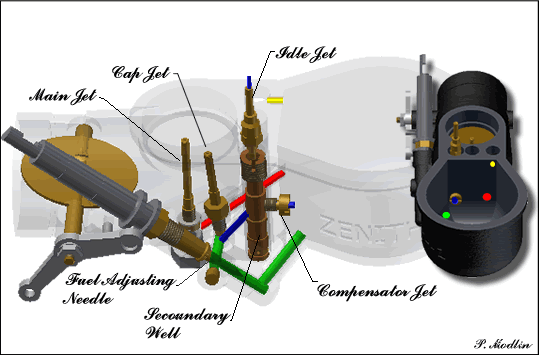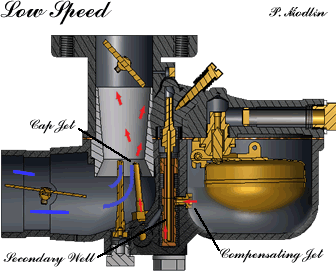| Carb Basics | Carb Assembly | Carb Trouble Shooting | Stalls When Stopping | Restoration Tips by Tom Endy |
After reading this page:
Visit the fordgarage.com
for historical and detailed information.
Visit Model-A.org for
further problem solving.
Suction created by the pumping of the pistons, causes fuel and air to flow through the carburetor into the engine. Each Alternate downward stroke draws in a fresh charge of mixed fuel and air.
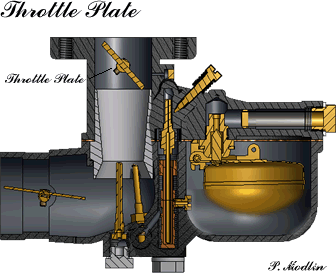 |
The throttle plate manages the amount of air flow that is delivered to the engine and is controlled by the "Throttle Lever" and "Accelerator" inside the cab.
|
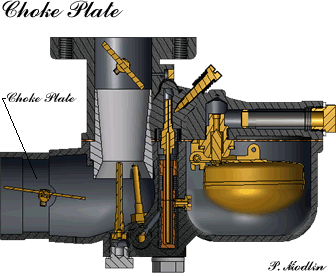 |
Pulling on the Carburetor Adjustment Knob, often called the GAV (Gas Air Valve) inside the cab opens and closes the Choke Plate. Turning the GAV enriches or leans the fuel mixture flowing through the "Cap Jet". |
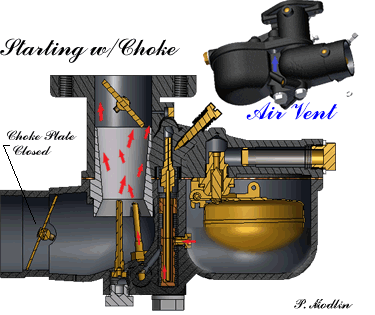 |
When the engine is started with the choke closed a greater vacuum is formed, pulling in a larger amount of fuel.
|
Fuel Flow
|
|
GREEN: Adjustable fuel supply for Cap Jet BLUE: Predetermined fuel supply by Compensator Jet for Cap Jet and Idle Jet RED: Direct fuel supply for Main Jet (Used for High Speeds) YELLOW: Ambient air to fuel bowl
|
|
Running
|
The “Compensating Jet” is inside the fuel bowl and empties into the “Secondary Well” which is open to the air. The “Cap Jet” connects with the “Secondary Well”. The “Cap Jet” can only draw as much fuel as the “Compensating Jet” will allow, regardless of the amount of suction. |
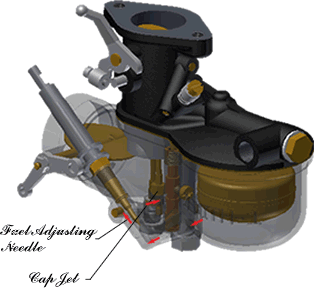 |
The "Cap Jet" has an additional fuel supply from the "Fuel Bowl". The flow rate of the fuel to the "Cap Jet" is controlled inside the cab with the "GAV" adjustment knob. Turning it left (towards the driver) enriches the fuel mixture for the "Cap Jet". The "Cap Jet" is used at low speeds. |
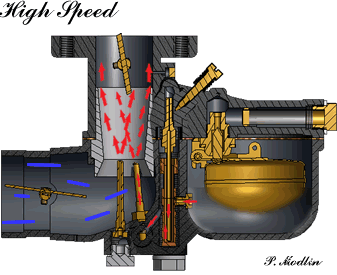 |
The “Main Jet” is connected directly to the "Fuel Bowl". It acts like a straw; the stronger the suction the greater amount of fuel will be supplied. The "Main Jet" kicks in and helps out the "Cap Jet" at higher speeds. When cruising, the "Cap Jet" can be leaned out (turn right) to conserve on fuel. |
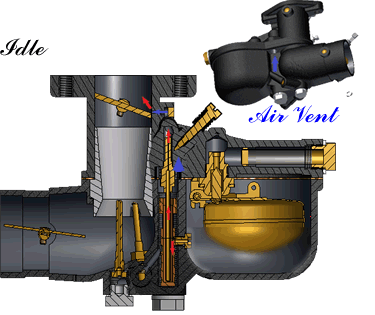 |
Idling occurs when the "Throttle Plate" is partially open. A vacuum above the plate is created, drawing air through a small hole, which pulls the gas from the secondary well through the "Idle Jet". |
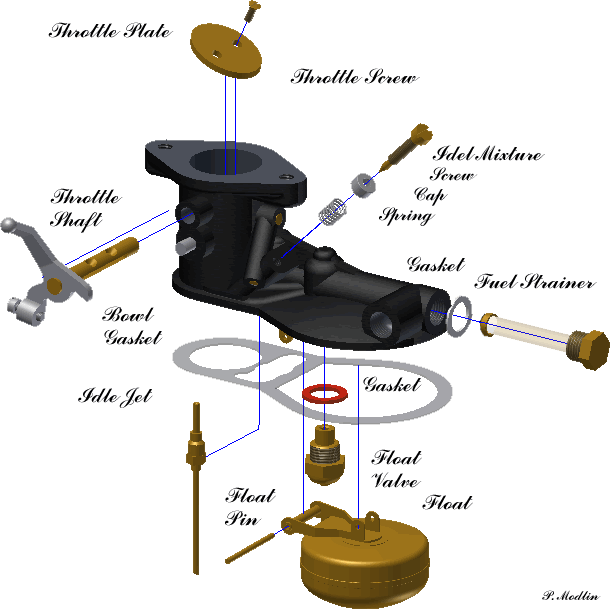
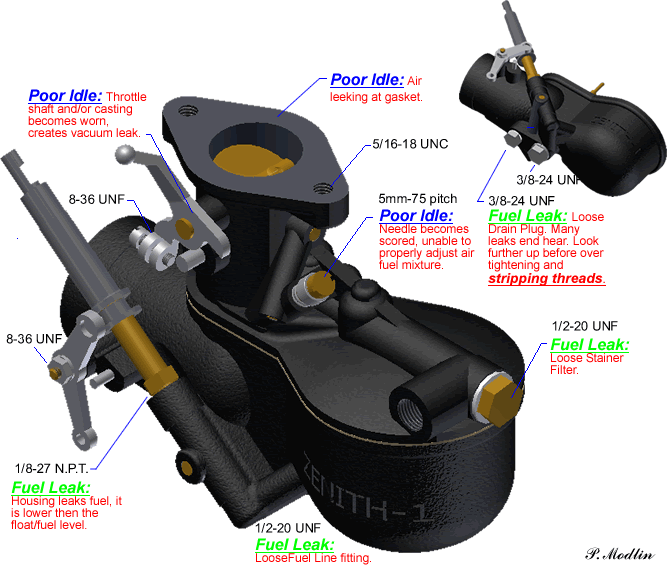
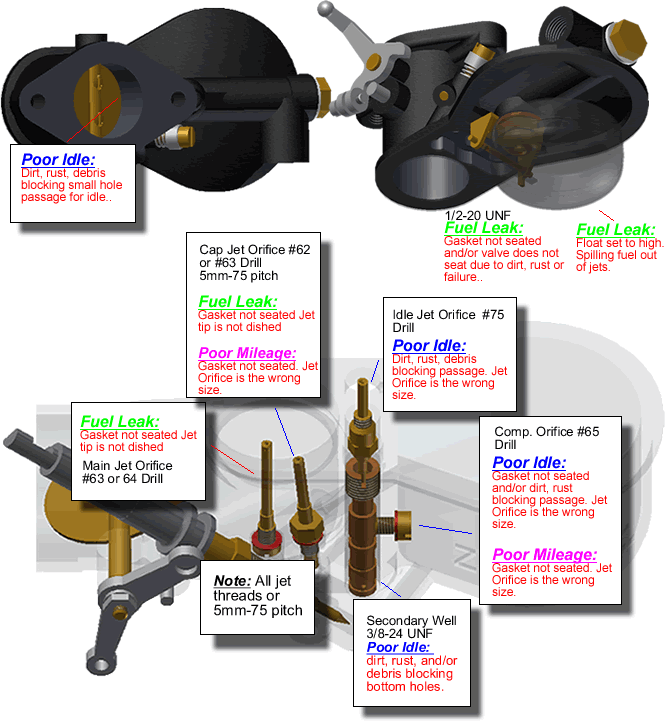
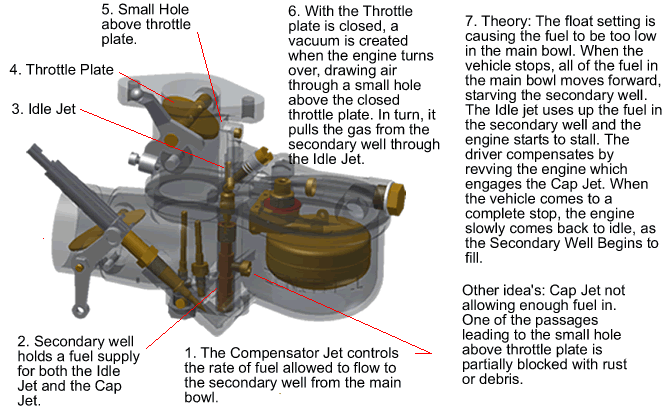
Zenith cores are easily found at swap meets. Most are usually in a cruddy rusty condition. However, if they are not damaged they can easily be restored. It is prudent to look them over carefully to make certain the top and bottom housings are not cracked or broken. Large file, but worth the download wait. |
|
|
| Zenith carburetor documentation: Good grief! Another article on the Model A Ford Zenith carburetor. Enough already! There must be a whole floor in the library of congress devoted to articles written about this carburetor. But wait! If you are into rebuilding Zenith carburetors you might want to read this. This article is about an easy way to check if the internal passageways in the carburetor are open or plugged. | ||
| Carb Basics | Carb Assembly | Carb Trouble Shooting | Stalls When Stopping | Restoration Tips by Tom Endy|
Paul Modlin
paul@modelAbasics.com
